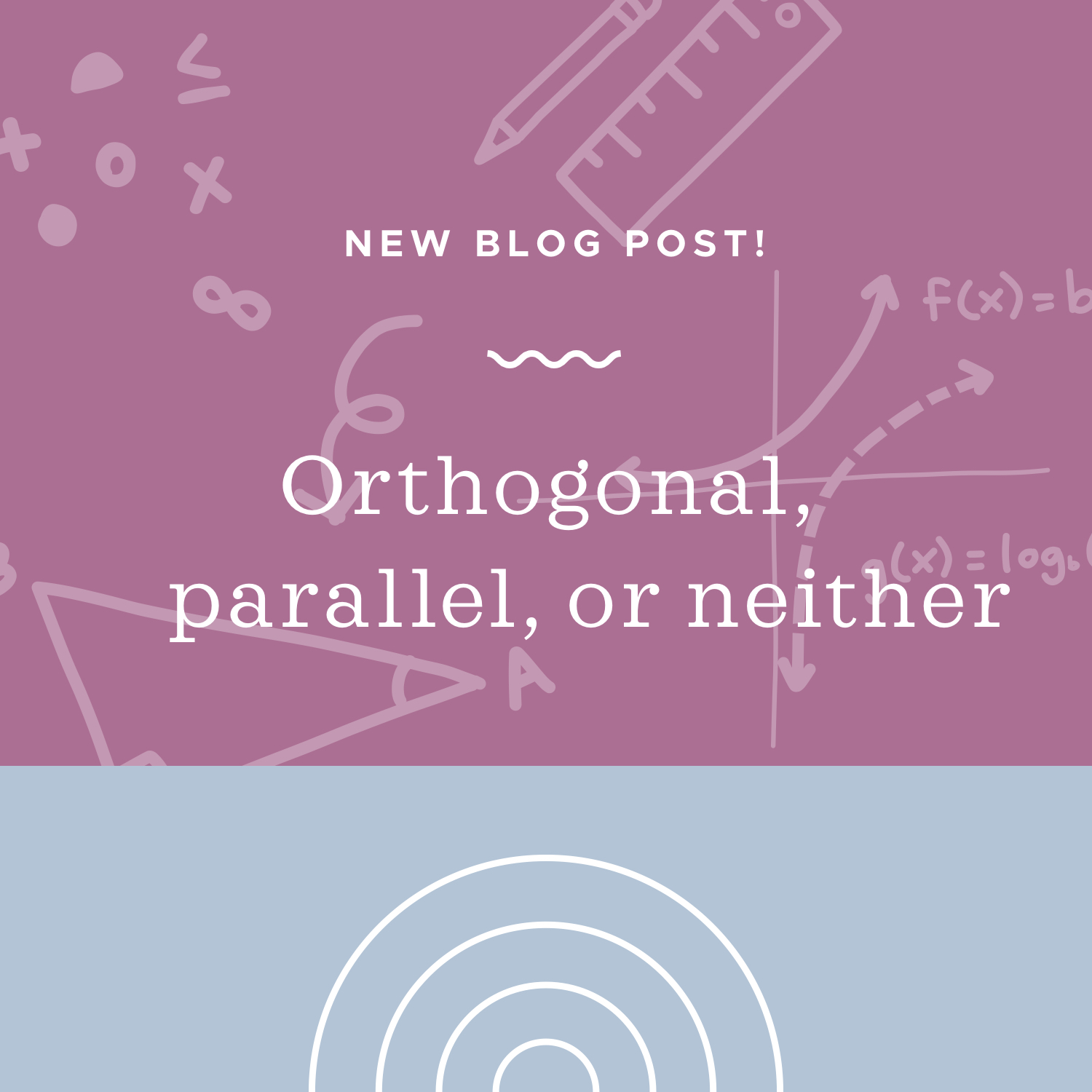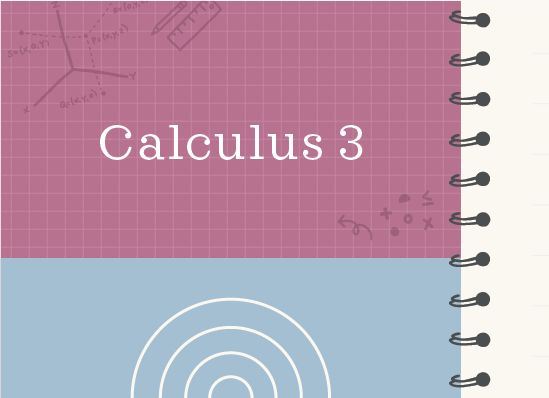How To Find If Two Vectors Are Orthogonal
Determining whether vectors are orthogonal, parallel, or neither

Defining vectors that are orthogonal, parallel, or neither
Nosotros say that two vectors ???a??? and ???b??? are
orthogonal if they are perpendicular (set at ???90^\circ??? from each other)
???a\cdot b=0???

Hullo! I'm krista.
I create online courses to assistance you stone your math course. Read more than.
parallel if they signal in exactly the same or contrary directions, and never cross each other
afterwards factoring out any common factors, the remaining direction numbers will exist equal
neither
Since it's easy to take a dot production, it'due south a practiced thought to become in the habit of testing the vectors to see whether they're orthogonal, and and then if they're not, testing to encounter whether they're parallel.
Testing vectors to meet whether they are orthogonal, parallel, or neither of those


Take the course
Want to learn more nigh Calculus 3? I accept a stride-by-stride course for that. :)
Testing three vector pairs to determine whether they are orthogonal, parallel, or neither
Instance
Say whether the following vectors are orthogonal, parallel or neither.
???a=\langle2,1\rangle??? and ???b=\langle-1,2\rangle???
???a=2i+3j+5k??? and ???b=i+4j-2k???
???a=\langle1,-2,3\rangle??? and ???b=\langle-2,iv,-6\rangle???
For ???a=\langle2,1\rangle??? and ???b=\langle-1,2\rangle???:
Nosotros'll take the dot product of our vectors to see whether they're orthogonal to ane another.
???a\cdot{b}=(ii)(-ane)+(1)(2)???
???a\cdot{b}=-2+2???
???a\cdot{b}=0???
Since the dot production is ???0???, we can say that ???a=\langle2,one\rangle??? and ???b=\langle-1,2\rangle??? are orthogonal. If we know that they're orthogonal, then by definition they tin't be parallel, and then we're done with our testing.
For ???a=2i+3j+5k??? and ???b=i+4j-2k???:
First we'll put the vectors in standard grade.
???a=2i+3j+5k???
???a=\langle ii,3,5\rangle ???
and
???b=i+4j-2k???
???b=\langle 1,4,-2\rangle ???
Now nosotros'll take the dot product of our vectors to see whether they're orthogonal to one another.
???a\cdot{b}=(2)(1)+(3)(4)+(5)(-2)???
???a\cdot{b}=two+12-10???
???a\cdot{b}=4???
Since the dot production is not ???0???, we can say that ???a=2i+3j+5k??? and ???b=i+4j-2k??? are not orthogonal.

Since it's easy to take a dot product, it'south a good idea to go in the habit of testing the vectors to see whether they're orthogonal, and and then if they're non, testing to run across whether they're parallel.
To say whether or not the vectors are parallel, we desire to look for a common factor in the direction numbers of either vector, and pull it out until both vectors are irreducible.
???a=\langle2,3,5\rangle??? is already irreducible because ???2???, ???three??? and ???five??? take no mutual factors. ???b=\langle1,4,-2\rangle??? is also irreducible because ???1???, ???4??? and ???-2??? have no common factors either.
Therefore, we can say that ???a=2i+3j+5k??? and ???b=i+4j-2k??? are neither orthogonal nor parallel.
For ???a=\langle1,-2,3\rangle??? and ???b=\langle-2,iv,-6\rangle???:
We'll have the dot product of our vectors to see whether they're orthogonal to i another.
???a\cdot{b}=(ane)(-2)+(-two)(4)+(3)(-6)???
???a\cdot{b}=-2-8-18???
???a\cdot{b}=-28???
Since the dot product is not ???0???, we can say that ???a=\langle1,-2,3\rangle??? and ???b=\langle-two,4,-vi\rangle??? are not orthogonal.
To say whether or non the vectors are parallel, we want to look for a mutual factor in the direction numbers of either vector, and pull it out until both vectors are irreducible.
???a=\langle1,-2,3\rangle??? is already irreducible because ???ane???, ???-two??? and ???3??? take no mutual factors. On the other paw, ???b=\langle-2,4,-half-dozen\rangle??? has a mutual factor of ???-2??? that can be factored out of the vector.
???b=\langle-2,four,-6\rangle???
???b=-ii\langle1,-2,3\rangle???
Now the management numbers of ???a??? and ???b??? are equal, and then we tin can say that ???a??? and ???b??? are parallel.

Get admission to the complete Calculus 3 course
Source: https://www.kristakingmath.com/blog/orthogonal-parallel-or-neither
Posted by: parrishthicamewyn1960.blogspot.com

0 Response to "How To Find If Two Vectors Are Orthogonal"
Post a Comment